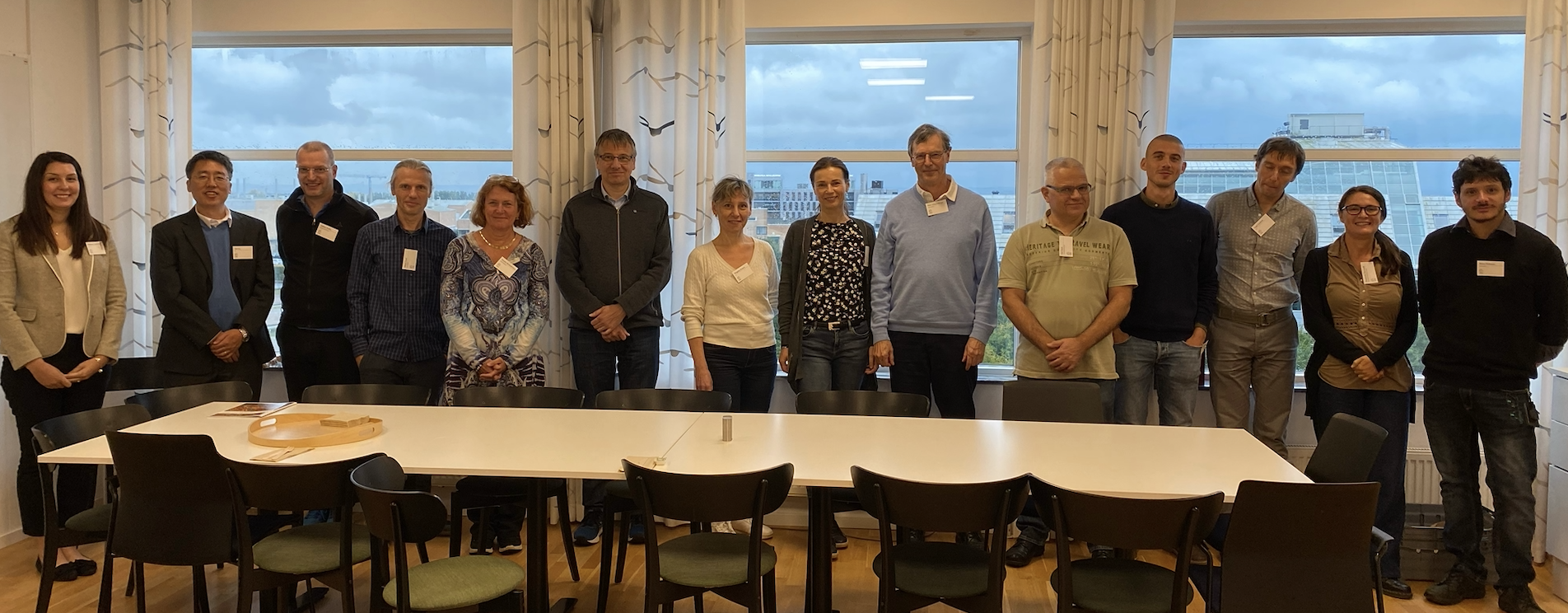The Antibodies in Solution research programme is right on track!
Participants at The Antibodies mid-term meeting.
The Antibodies in Solution research programme (under the relevant working group of the IPDD Theme) had a successful mid-term meeting in September. The aim was to discuss the experimental and simulation results that the individual consortium members had collected so far on the NIST antibody (NISTmAb) since the middle of 2021, and tackle important scientific questions. The work is going according to plan, and research groups within the programme have already performed ample amounts of X-ray, neutron as well complementary experiments with the NISTmAb.
During the meeting, discussions also focused on how to make sure everyone was included in the work, and how one can further facilitate effective knowledge sharing.
Anna Stradner, Professor in Physical Chemistry at Lund University, and research programme leader, reflects that being a large consortium working towards a common goal is key to scientific progress and discovery for such complex systems.
– Individual scientists can only make small steps in relation to antibody research. They might test a specific antibody under very specific conditions, or use one or two methods. Through this they learn a little, which while of course important, is often hard to put in a general context. Meanwhile, in another part of the world, another research group is working on something slightly similar but still different. None of this is a concerted, joint effort, and chances to make a considerable step forward in the understanding of antibody behaviour are limited.
– With our programme, we wanted to create a research investigation that covers all relevant length and time scales needed to understand the properties of individual antibodies as well as those of concentrated solutions. Now, finally we are all able to work on the same antibodies, under the same conditions, using a broad suite of different experimental and modelling techniques.
The meeting marked the end of a long journey
Representatives from the 14 research groups, the American National Institute of Standards and Technology (NIST), and the pharmaceutical company Novartis joined the meeting in Lund. It marked the end of a long journey to get hold of sufficient quantities of antibodies to allow for such a concerted effort, prolonged by the corona pandemic. Now the consortium will be able to work with not just one, but two antibodies: in addition to the NISTmAb, a new antibody will be provided by Novartis free of charge, and respective Material Transfer Agreements between the involved universities and Novartis are currently being finalized.
– That fact that we could meet in person made all the difference, especially since many of us had never met physically before. It made our connection so much stronger. We also had much time for discussion and interesting talks.
– I am happy to say that we are completely on track with our research as outlined in the LINXS mAb Research Road Map. People are very excited because everyone sees the value and the advantage of working with the same antibody, under the same, agreed upon conditions. Now we will be able to make a series of experiments and generate a reference data set that can then be used to improve simulation models. I am completely convinced that this is the way to really make progress in this research area.
LINXS venue suited for in-depth discussions
The LINXS venue, with its layout, and technical equipment also played a big part in making the meeting a success, according to Anna Stradner.
– It is a great place for about 15-20 people. You can have all your meals there, and work with no distractions. We also love the speaker owl! It makes having people online so much easier!
About the Antibodies in Solution research programme
The aim of the research programme is to increase knowledge on the properties of individual antibodies as well as those of concentrated solutions. Monoclonal antibodies are of high interest to pharmaceutical industry due to their potential as efficient therapeutics, for example in cancer treatment. Yet, many questions on how antibodies behave in solutions remain to be solved, particularly for the high concentrations needed for the administration of physiologically efficient doses. The programme gathers 14 research groups, the American National Institute of Standards and Technology (NIST), and the pharmaceutical company Novartis in Switzerland.
The Antibodies in Solution research programme is part of the IPDD theme

